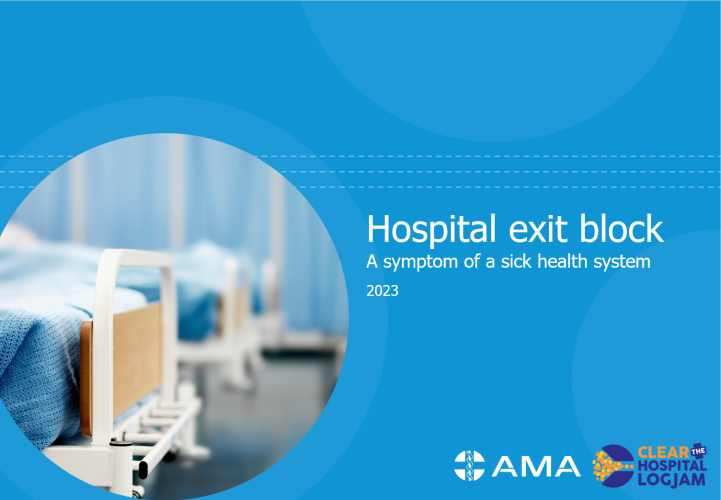Hospital exit block: a symptom of a sick system
AMA analysis reveals that targeted programs that address hospital exit block could save an estimated $811.6 million to $2.17 billion a year.

‘Exit block’ is a term commonly used to describe the situation when patients receiving hospital inpatient care are medically able to be discharged but have no safe destination. The most common reasons for this are that people’s care needs have changed during their hospital admission, and they are now waiting for appropriate aged care (such as a place in a residential aged care facility or a home care package at the right level), or for disability care (often related to National Disability Insurance Scheme (NDIS) funding).
Exit block is a symptom of a healthcare system that is struggling to meet community demand for health and social services, however it has a significant impact on hospital logjams. Exit block means there are less beds for inpatient services, which ultimately results in increased waiting times for ambulance services, emergency department services, and essential elective surgeries.
AMA is calling on governments to work together to refine the current arrangements around transitioning people out of inpatient wards into appropriate care, and implement targeted solutions to address exit block. AMA analysis reveals that addressing exit block could save an estimated $811.6 million to $2.17 billion a year.



